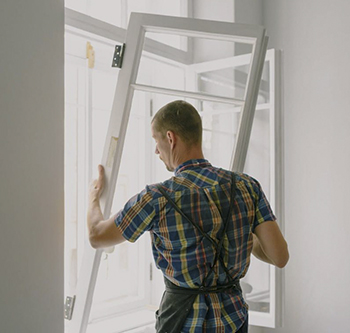Traditional contract for construction
The 'traditional' procurement route, sometimes referred to as 'design bid build', 'bid build' or 'employer designed' remains the most commonly used method of procuring building works.
The client first appoints consultants to design the project in detail and then prepare tender documentation, including drawings, work schedules and bills of quantities. Contractors are then invited to submit tenders for the construction of the project, usually on a single-stage, competitive basis. This may be referred to as a 'traditional contract'. The contractor is not responsible for the design, other than temporary works, although some traditional contracts do provide for the contractor to design specific parts of the works.
Typically, the client retains the design consultants during the construction phase to prepare any additional design information that may be required, to review any designs that might be prepared by the contractor, and to inspect the works. Normally, one consultant (often, but not necessarily, the architect) will be appointed to administer the contract.
Traditional construction contracts are most commonly lump-sum contracts, however, measurement contracts and cost reimbursement contracts can also be used for ‘traditional’ projects where design and construction are separate, sequential activities.
This form of procurement is suitable for both experienced and inexperienced clients. Fully developing the design before tender gives the client certainty about design quality and cost, but it can be slower than other forms of contracting, and as the contractor is appointed only once the design is complete, they are not able to help improve the buildability and packaging of proposals as they develop.
It is considered to be a low risk method of contracting for the client, as the contractor takes the financial risk for construction. However, if design information is incomplete at tender, or if significant variations are required after the contractor has been appointed, the cost to the client can be significant. Because of this, and because of the separation of design and construction, traditional procurement can be seen as adversarial.
See also: Traditional contract - pros and cons.
The most common forms of traditional contract remain the JCT (Joint Contracts Tribunal) Standard Building Contract, Intermediate Building Contract and Minor Works Building Contract.
When might it be appropriate?
- If the employer has had the design prepared
- If the design is substantially completed at time of contractor selection
- The client wishes to retain control over the design and specification
- Cost certainty at start on site is important
- The shortest overall programme is not the client’s main priority.
What are the advantages of traditional procurement?
- Competitive fairness and transparent process.
- Design led – can ensure quality
- Price certainty before commencement
- Well known procedures
- Changes are reasonably easy to arrange and value
What are the disadvantages?
- Overall project duration may be longer than other procurement routes – sequential process
- No input into design and planning by the contractor
- Strategy based on price competition – could lead to adversarial relations
- Dual point of responsibility – design team for design and contractor for construction
- If the design is not complete at the time of tender, cost and time certainty are reduced.
For a detailed description of the sequence of activities necessary on a traditional contract see the work plan: Traditional contract: outline work plan.
[edit] Related articles on Designing Buildings
- Atkins v Secretary of State for Transport.
- Appointing consultants.
- Bill of quantities.
- Client.
- Construction contract.
- Contract conditions.
- Contractor.
- Design quality.
- Job order contracting.
- Notifications during construction works
- Procurement route.
- Temporary works.
- Tender.
- Tender documentation.
- Traditional contract: outline work plan.
- Traditional contract - pros and cons.
- Two-stage tender.
- Variations.
[edit] External references
Featured articles and news
Licensing construction in the UK
As the latest report and proposal to licence builders reaches Parliament.
Building Safety Alliance golden thread guidance
Extensive excel checklist of information with guidance document freely accessible.
Fair Payment Code and other payment initiatives
For fair and late payments, need to work together to add value.
Pre-planning delivery programmes and delay penalties
Proposed for housebuilders in government reform: Speeding Up Build Out.
High street health: converting a building for healthcare uses
The benefits of health centres acting as new anchor sites in the high street.
The Remarkable Pinwill Sisters: from ‘lady woodcarvers’ to professionals. Book review.
Skills gap and investment returns on apprenticeships
ECA welcomes new reports from JTL Training and The Electrotechnical Skills Partnership.
Committee report criticises UK retrofit schemes
CIOB responds to UK’s Energy Security and Net Zero Committee report.
Design and construction industry podcasts
Professional development, practice, the pandemic, platforms and podcasts. Have we missed anything?
C20 Society; Buildings at Risk List 2025
10 more buildings published with updates on the past decade of buildings featured.
Boiler Upgrade Scheme and certifications consultation
Summary of government consultation, closing 11 June 2025.
Deputy editor of AT, Tim Fraser, discusses the newly formed society with its current chair, Chris Halligan MCIAT.
Barratt Lo-E passivhaus standard homes planned enmasse
With an initial 728 Lo-E homes across two sites and many more planned for the future.
Government urged to uphold Warm Homes commitment
ECA and industry bodies write to Government concerning its 13.2 billion Warm Homes manifesto commitment.
From project managers to rising stars, sustainability pioneers and more.
Places of Worship in Britain and Ireland, 1929-1990. Book review.
The emancipation of women in art.
























Comments